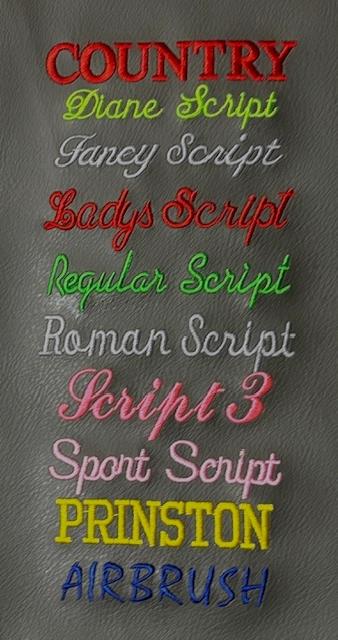The Art of Custom-made Embroidery: Opening the Tricks to Creating One-of-a-kind and Unforgettable Styles
The keys to developing customized needlework designs that mesmerize the eye and leave a lasting impression lie in a fragile equilibrium of technique, creativity, and focus to information. As we delve right into the world of personalized embroidery, we reveal the nuanced interplay in between string selection, stitch complexity, and style personalization that elevates a simple garment to a work of art.
Selecting the Right Embroidery Threads
When choosing embroidery threads, what essential aspects should you think about to make sure the best outcomes for your customized layouts? The selection of embroidery string is critical in establishing the last result of your embroidered style.
Thicker strings can add measurement and texture to your layout, while finer threads are ideal for complex information and little text. Furthermore, thinking about the shade fastness and washability of the thread is critical to guarantee that your custom styles preserve their quality and vibrancy over time.
Exploring Different Stitch Methods
To explore the realm of 'Exploring Various Stitch Strategies', one must comprehend the complexities and nuances that each sewing approach offers the art of needlework. Various stitch strategies not just include aesthetic passion yet likewise add to the total appearance and dimension of the layout. One popular stitch method is the satin stitch, which includes closely packed parallel stitches to produce a smooth and glossy surface area, suitable for filling out forms and producing bold outlines.
On the various other hand, the backstitch is a versatile method frequently used for laying out and adding great details. It includes sewing backwards to develop a strong line of needlework. Additionally, the French knot stitch adds a responsive aspect to styles, excellent for producing distinctive accents like blossom facilities or ornamental touches.
Discovering various stitch techniques allows embroiderers to have fun with light, darkness, and deepness within their styles, raising the aesthetic appeal and creative top quality of their embroidery projects. By understanding numerous sewing techniques, one can open limitless opportunities for developing unique and remarkable personalized needlework items.
Incorporating Personalized Layout Aspects
Having actually checked out the complexities of various stitch methods such as the satin stitch, backstitch, and French knot, the emphasis now moves towards integrating personalized design aspects in custom embroidery tasks. Personalized style components play an important role in making needlework tasks really distinct and unforgettable.
An additional way to include personalized style components is by including icons or concepts that hold unique meaning to the recipient or reflect their interests and personality. Incorporating a favored blossom, animal, or hobby-related symbol can make the embroidery design a lot more purposeful and tailored. Furthermore, selecting colors that resonate with the recipient or align with the designated style can better enhance the personalization of tailored wedding suits the needlework task.
Mastering the Art of Shade Sychronisation

One secret element of color control is understanding shade theory. This includes knowing how various shades communicate with each various other, the emotions they communicate, and how they can be combined to produce aesthetically appealing styles. By using color concept principles, embroiderers can develop unified color combinations that boost the overall look of the design.
In addition, taking note of contrast is critical in color sychronisation. Making use of contrasting colors can aid certain aspects of the layout pop, boost legibility, and develop a visually vibrant needlework item. By mastering the art of color sychronisation, embroiderers can elevate their layouts and create unforgettable pieces that reverberate with customers and visitors alike.
Enhancing Structure With Advanced Embroidery Stitches
French knots, for example, are best for including small, increased dots to your style, simulating the appearance of beads or developing a distinctive surface area. Bullion knots, on the various other hand, can be used to create twisted, ropelike aspects that add an elegant feel to the embroidery. Seed stitching entails small, scattered stitches that can fill out locations with a multicolor texture, while turkey job creates cosy, dimensional accents reminiscent of pet hair or vegetation. Trying out with these sophisticated needlework stitches enables you to Continued press the limits of conventional embroidery and produce really one-of-a-kind and visually attractive textures in your styles.
Final Thought
To conclude, the art of custom embroidery involves a mix of selecting the right threads, checking out different stitch strategies, including customized style elements, grasping shade control, and enhancing appearance with sophisticated stitches. By understanding and executing these crucial elements, embroiderers can develop special and remarkable layouts that showcase their creativity and skill. Embroidery enthusiasts can open the keys to developing gorgeous and custom pieces that stand out and leave a long lasting impression.